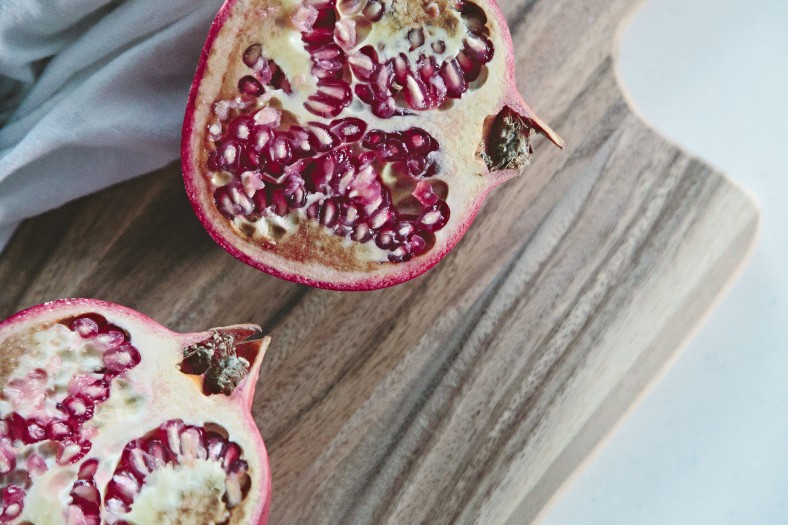There is something about beets that inspires writers, chefs and all in between to wax poetic about their mysterious beauty and dark earthiness. Famed food writer Nigel Slater had this to say about beets in his book, Tender: “Beet’s concentrated jewel-like color is both its joy and its downfall. It is Murphy’s law that it should marry so happily with the virginal white of goat cheese’s, mascarpone, and thick puddles of crème fraiche, none of whose looks are improved by a pink stain curdling the outer edge.” Sara Forte, from the lovely Sprouted Kitchen, writes, “I love them for their boldness. For their unmatched flavor and unapologetic way of making everything pink. They are what they are, without reservation.” In perhaps the most famous literary ode to the beet, Tom Robbins opens his Jitterbug Perfume with the following,
“The beet is the most intense of vegetables. The radish, admittedly, is more feverish but the fire of the radish is a cold fire, the fire of discontent not of passion. Tomatoes are lusty enough, yet there runs through tomatoes an undercurrent of frivolity. Beets are deadly serious. The beet is the melancholy vegetable, the one most willing to suffer. You can’t squeeze blood out of a turnip. The beet is the murderer returned to the scene of the crime. The beet is what happens when the cherry finishes with the carrot. The beet is the ancient ancestor of the autumn moon, bearded, buried, all but fossilized; the dark green sails of the grounded moon-boat stitched with veins of primordial plasma; the kite string that once connected the moon to the Earth now a muddy whisker drilling desperately for rubies. The beet was Rasputin’s favorite vegetable. You could see it in his eyes. An old Ukranian proverb warns, ‘A tale that beings with a beet will end with the devil.’ This is a risk we have to take. ”
homely beets + glamorous pomegranate
It is true that the beet wears its earthy flavor like a badge of honor, proudly and adamantly, but I must admit that when cooking with beets, I mostly ruminate on whether or not their juices will stain our white counter tops rather than their metaphorical relation to Slavic politics. I also think of my sixth-grade teacher, who frequently ate pungent sliced beets straight from the can for lunch, filling the classroom with the cloying odor of canned beets and nearly convincing me to avoid beets forever.
This is likely why Tom Robbins is an acclaimed author, and I am not. C’est la vie.
Adam and I rediscovered our love for beets this summer through this beet and marinated chèvre chop salad. We ate it several times through the summer, with varying vegetables fresh from the garden, and it is everything a summer salad should be: light, bright with apple and white balsamic, and the beet marries nicely with the bouquet of other flavors at play.

As the weather has turned significantly colder (Helena is deep in the throes of winter now, with sub-zero temperatures on several occasions over the past few weeks), I was in search of a warmer and more comforting use for our bulbous purple friends than a salad. Roasting the beets, regardless of their use, is a must: the beet definitely benefits from the caramelization produced through slow-roasting. A perusal of the New York Times Food section inspired the addition of cumin, and the discovery of this gorgeous recipe (how glorious are those photos?) inspired, well, the rest.
This is possibly my new favorite method for preparing beets. The cumin and fennel combine beautifully with that particularly unique beet flavor; I could not stop snitching slices of beet off of the baking sheet while whisking up the dressing. (I mentally filed this recipe away to use for beet chips in the future.)

Moroccan Roasted Beets With Pomegranate + Mint
Adapted from Feasting At Home‘s Roasted Beets with Balsamic Glaze
Beets
2 large beets
Fennel seeds, to taste
Ground cumin, to taste
Olive oil + balsamic vinegar, drizzled, to taste
Salt + pepper
Toppings, all to taste
Arils from 1/2 pomegranate
Fresh mint
Feta
Maple syrup
1. Slice the beets thinly using a mandolin or sharp knife. Toss with cumin, fennel seeds, and olive oil until coated. Lay out in large jelly roll pan and drizzle with balsamic vinegar. Roast at 375°F until edges are crisp but centers remain soft. Cooking times will vary due to elevation, oven type and other factors.
2. Remove the pomegranate arils from the fruit; placing the arils in a deep bowl of water allows the white pith and membrane to float to the top. Simply scoop it off of the top with a spoon (or a tea-sized strainer, if you have one) and then pour out the water, leaving the arils behind. Chiffonade the fresh mint and crumble the feta, if in block form.
3. While still warm, arrange the roasted beets in on individual plates or in a serving dish, if you like to live dangerously, and top with pomegranate arils, fresh mint, feta cheese and a drizzle of maple syrup (all in amounts to your taste). Crack some additional salt and pepper over the top as needed.
Serves two as an entrée, four as a side. For a Paleo-friendly twist, omit the feta cheese and replace olive oil with coconut oil.
Enjoy!




I loved the combination of beetroot with the pomegranate, delicious recipe!
LikeLike
Agreed, alifemoment! Isn’t it delightful? 🙂
LikeLiked by 1 person
It definitely is!
LikeLike